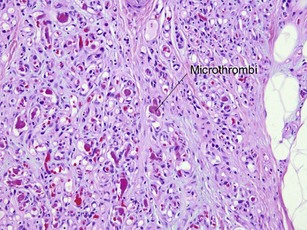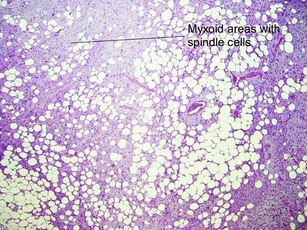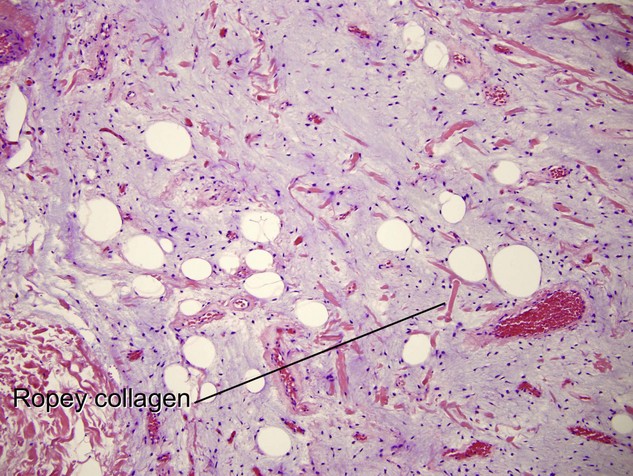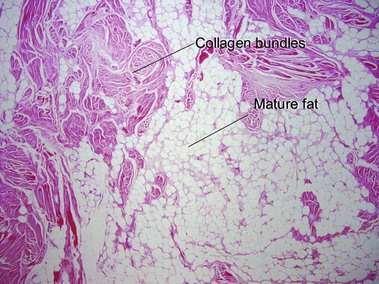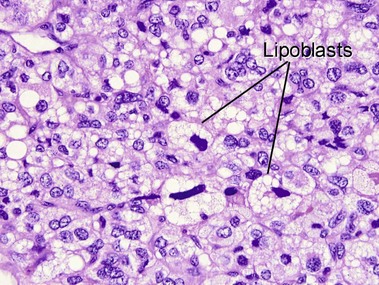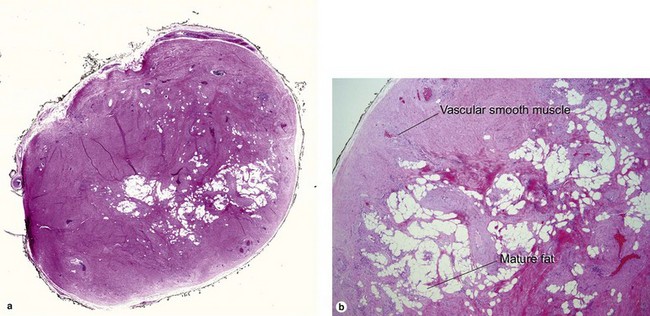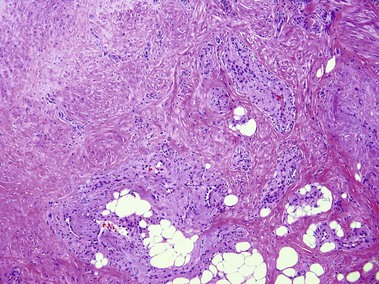Differential Diagnosis
The sharp circumscription, superficial location, floret cells, paucity of mitotic activity, and absence of lipoblasts distinguish pleomorphic lipoma from pleomorphic liposarcoma. Lipoblasts are immature fat cells that may have an eccentric nucleus (signet-ring lipoblasts) or have a central scalloped nucleus indented by lipid vacuoles (mulberry lipoblasts). Liposarcoma typically arises in deep soft tissue, especially the retroperitoneum, but may involve the skin. Liposarcomas demonstrate an arborizing pattern of blood vessels that resembles “chicken wire.” More information on liposarcoma and other soft tissue neoplasms is available in the on-line component of this text.





